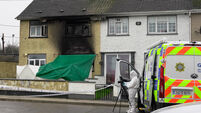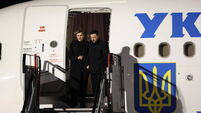Warning as 200,000 are eligible for medical card
The situation, which is costing the taxpayer an extra €66.9 million per year to cover the health access of financially stricken families, means at the end of May 39.1% of the population was entitled to a medical or GP visit only card.
Detailed research seen by the Irish Examiner confirms the financially linked eligibility rate has surged in the past year-and-a-half as the economic crisis continues.
The 39.1% figure, the equivalent of 1.79m people, compares to 34% in January 2010.
The findings are detailed in an independent 20-page review of the existing General Medical Scheme (GMS) contract by the Irish Patients Association (IPA) and leading economist, Professor Ray Kinsella.
GPs with a GMS contract are the only primary care doctors entitled to treat medical and GP visit cardholders without the patient paying a fee as the doctor is reimbursed by the state.
Medical cards are available to a single person under the age of 66 with a weekly income of (€184/€201.50 if aged 66-69); a single person living with family €166/€173.50); and a married/co-habiting/lone parent with children (€266.50/€298).
GP visit cards are given to a single person living alone (€276/€302); a single person living with family (€246/€260); and a married/co-habiting/lone parent with children (€400/€447).
According to the study:
* 214,165 more people were on medical or GP visit only cards in May compared to January 2010, meaning there are now 1.667m medical card and 122,590 GP visit only cardholders — 39.1% of the population compared to 34.42% just 17 months earlier.
* Medical card rates have risen by 12.8% (up 189,900) and GP visit only cards by 24.7% (up 24,265).
* Donegal has the highest percentage of medical or GP visit only card holders, at 59%, while all counties have seen a significant growth since January 2010.
* In the capital, Dublin North West and Dublin North Central have seen 127% and 114% GP visit card rises respectively.
* GPs on the GMS contract earned an average of €212,950 for providing the service in 2009, the latest full figures available.
* Access to GMS GPs is uneven throughout the country, with the most in need areas often having limited access to care.
* The IPA study is aware of just one GP clinic at which charges to see private patients have “reduced significantly” since January 2010. This was an exclusively private practice in Dublin which cut its visit charge from €55 to €35.
Prof Kinsella said the situation is further proof the economic crisis is causing a “health poverty trap” as cutbacks result in job losses, which increase medical state financial support demand, which increases the Government bill, which causes more cutbacks in the wider economy.
“The negative implications arising from the EU/ECB/IMF bailout agreement impact on patients [and cause] the additional demand for services at the same time as significant cutbacks in services.
“Health status and poverty are inextricably linked. The IPA data suggest Ireland is slipping into a new health poverty trap,” he said.
DONEGAL has the highest percentage of people with medical or GP visit only cards in the country, with 59% of the area’s inhabitants in receipt of the State support.
IPA study figures show the county had 86,946 and 6,838 of the cards respectively in May, up 7% and 9% since January 2010.
While 39.1% of the population nationally has one of these cards, the figure is also significantly higher in Waterford (50.8%, up 5%), Roscommon (49.4%, up 5%) and Louth (49.2%, up 8%).
All areas have seen a rise in medical and GP visit only card rates, including Cork — which has seen an 8.9% and 16.6% rise, with 39.2% of people now in receipt of either card — and Limerick, where there has been a near 6% overall growth.
One in three people in Dublin now receive either card. However, in Dublin North West and Dublin North Central there has been a 127% and 114% increase since January last year.
* FOCionnaith.direct@examiner.ie











